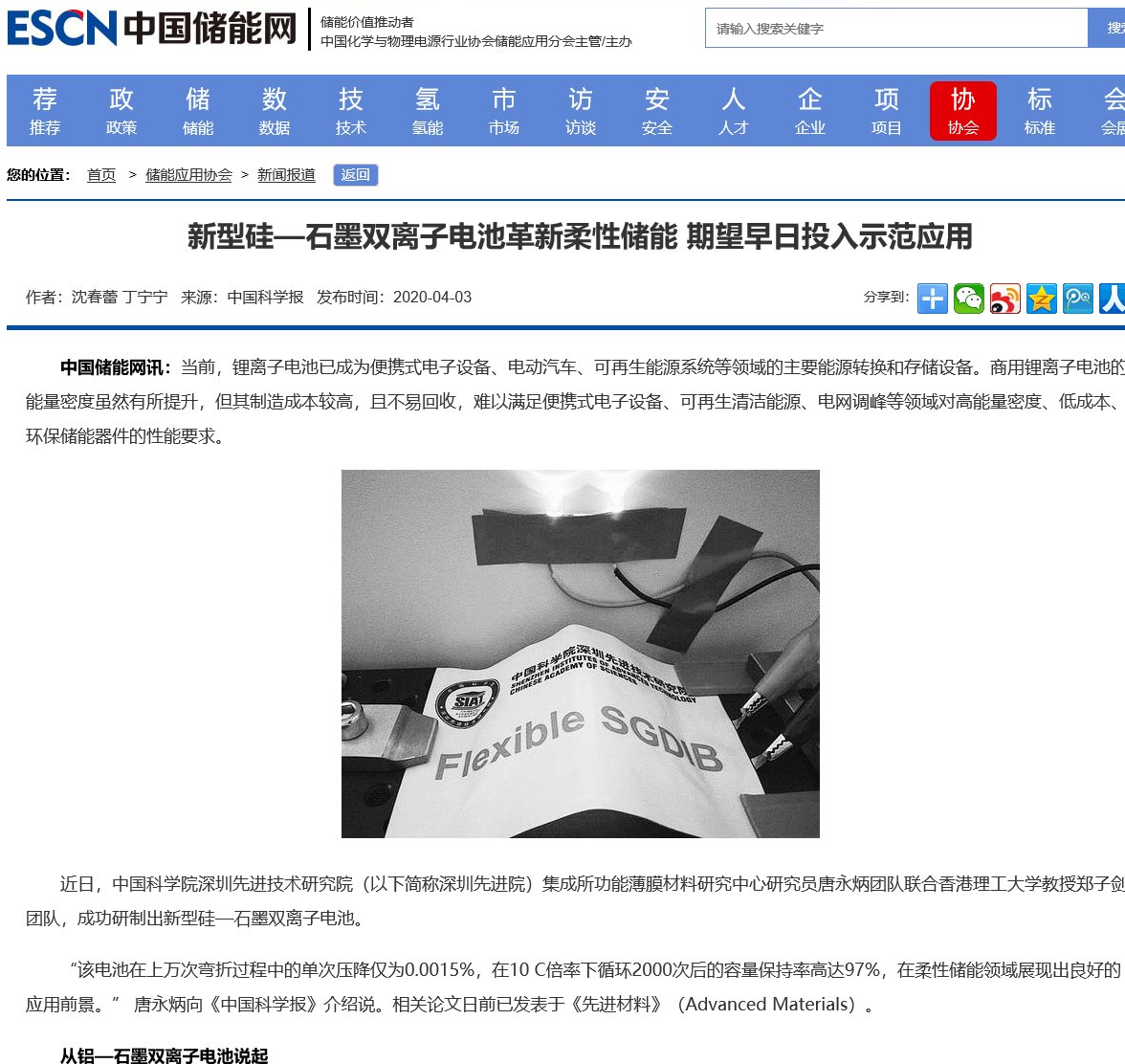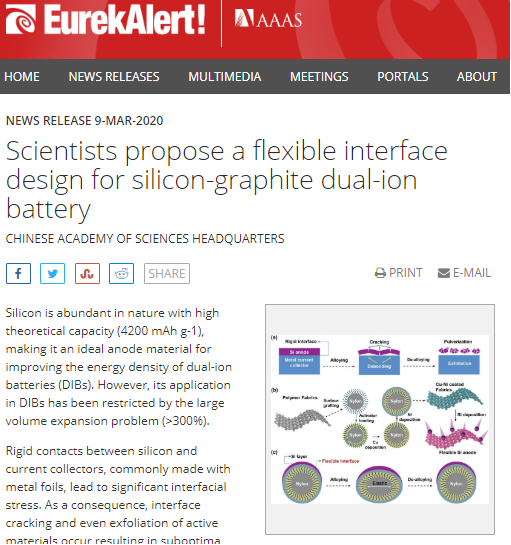
Silicon is abundant in nature with high theoretical capacity (4200 mAh g-1), making it an ideal anode material for improving the energy density of dual-ion batteries (DIBs). However, its application in DIBs has been restricted by the large volume expansion problem (>300%). Rigid contacts between silicon and current collectors, commonly made with metal foils, lead to significant interfacial stress. As a consequence, interface cracking and even exfoliation of active materials occurs, resulting in unsatisfied cycling performance.
Our research group has proposed a flexible interface design to regulate alloying stress on silicon anodes. This flexible interface design modulates stress distribution via the construction of a silicon anode on a soft nylon fabric modified with a conductive Cu-Ni transition layer, thus endowing the silicon electrode with remarkable flexibility and stability over 50,000 bends.
Assembly of the flexible silicon anode with an expanded graphite cathode yielded a silicon-graphite DIB (SGDIB) having record-breaking rate performance (up to 150 C) and cycling stability over 2000 cycles at 10 C with capacity retention of 97%. Moreover, the SGDIB showed high capacity retention of about 84% after 1500 bends and a low self-discharging voltage loss of 0.0015% per bend after 10,000 bends, indicating high potential for high-performance, flexible energy-storage applications. The study, entitled "Flexible Interface Design for Stress Regulation of a Silicon Anode toward Highly Stable Dual-Ion Batteries," was published online in Advanced Materials as cover paper.


The American Association for the Advancement of Science and other media reports on this research
The links to the news :
http://www.escn.com.cn/news/show-939550.html
https://www.eurekalert.org/pub_releases/2020-03/caos-spa030920.php